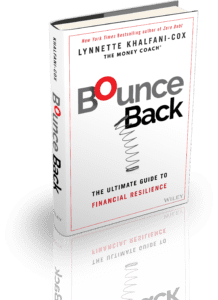Market conditions aren’t exactly making life easy for small businesses right now. Between persistent inflation, fluctuating consumer spending, and high interest rates, financial planning requires more precision than ever. A miscalculated budget can quickly reduce profit margins, and with borrowing costs still high, there’s very little room for error.
If you’re not building your 2025 budget with a clear-eyed view of these realities, you risk setting unrealistic goals or, worse, mismanaging cash flow altogether. But worry not – with our tips, you can create an accurate budget and see your business thrive.
Align Budget with Business Goals
Look at your budget as a financial strategy that should reflect your business priorities. Whether you’re running an accounting firm aiming to expand services, a carpentry business looking to upgrade equipment, or a café managing supply costs, the goal is to make your budget match what you actually plan to achieve.
What does this mean, exactly? That you should set revenue targets that align with market trends, identify your cost-saving opportunities, and ensure your spending supports business growth rather than just maintaining operations. This is, of course, easier said than done, but with some time, research, and the right tools, it’s absolutely doable.
Use Digital Tools to Improve Accuracy
Speaking of right tools, look into budgeting software and cost-estimating apps. Unlike traditional spreadsheets, which leave too much room for error, these tools can eliminate guesswork from this process by providing real-time financial insights.
For instance, carpentry businesses can use the Joist carpentry tool, an estimating and invoicing app, to forecast material costs and streamline payments. Accountants can benefit from cloud-based financial management platforms like QuickBooks, which offer automated expense tracking and financial projections.
Even small restaurants or cafés can leverage POS systems with built-in analytics to track inventory and revenue patterns.
Account for Fixed and Variable Costs
A good budget is one that separates fixed costs (rent, insurance, loan payments) from variable costs (raw materials, seasonal labor, marketing). Some expenses, like utility bills, can fluctuate but they still follow a pattern, making them easier to anticipate. Others – like supply chain disruptions – require more flexibility in budgeting.
If your business relies on imports or fluctuating material costs, always factor in a contingency fund to absorb price spikes without derailing operations.
Estimate Revenue Realistically
Overestimating income is one of the fastest ways to create a budget that fails. To avoid this, never rely on best-case scenarios; instead, base projections on past revenue trends, industry forecasts, and customer demand patterns.
For example, service businesses like consulting firms should account for client retention rates, while retail businesses should track seasonal demand shifts. The point is, plan conservatively because if revenue surpasses expectations, reallocating excess funds is far easier than trying to cover shortfalls.
Take Control of Unnecessary Expenses
It’s easy for unnecessary spending to creep into business operations when expenses aren’t scrutinized. Audit your recurring costs: Are you paying for software subscriptions you barely use? Is your marketing budget driving measurable returns? A well-crafted budget should ensure every dollar works toward your business objectives.
As an example, cafés may find that switching suppliers reduces costs without sacrificing quality, while independent contractors might save by bundling business insurance policies.
Monitor and Adjust Throughout the Year
Finally, make sure you have regular check-ins – monthly or at least quarterly – to help catch financial red flags before they become problems. After all, a budget set in January won’t remain relevant in July if market conditions change.
If costs increase unexpectedly, you can adjust before cash flow is squeezed, and if revenue grows beyond projections, you can reinvest strategically rather than letting funds sit idle.
Again, this is why we’re fans of accounting software solutions – they can help businesses automate financial reports, making it easier to track where money is actually going versus where it was planned to go.










